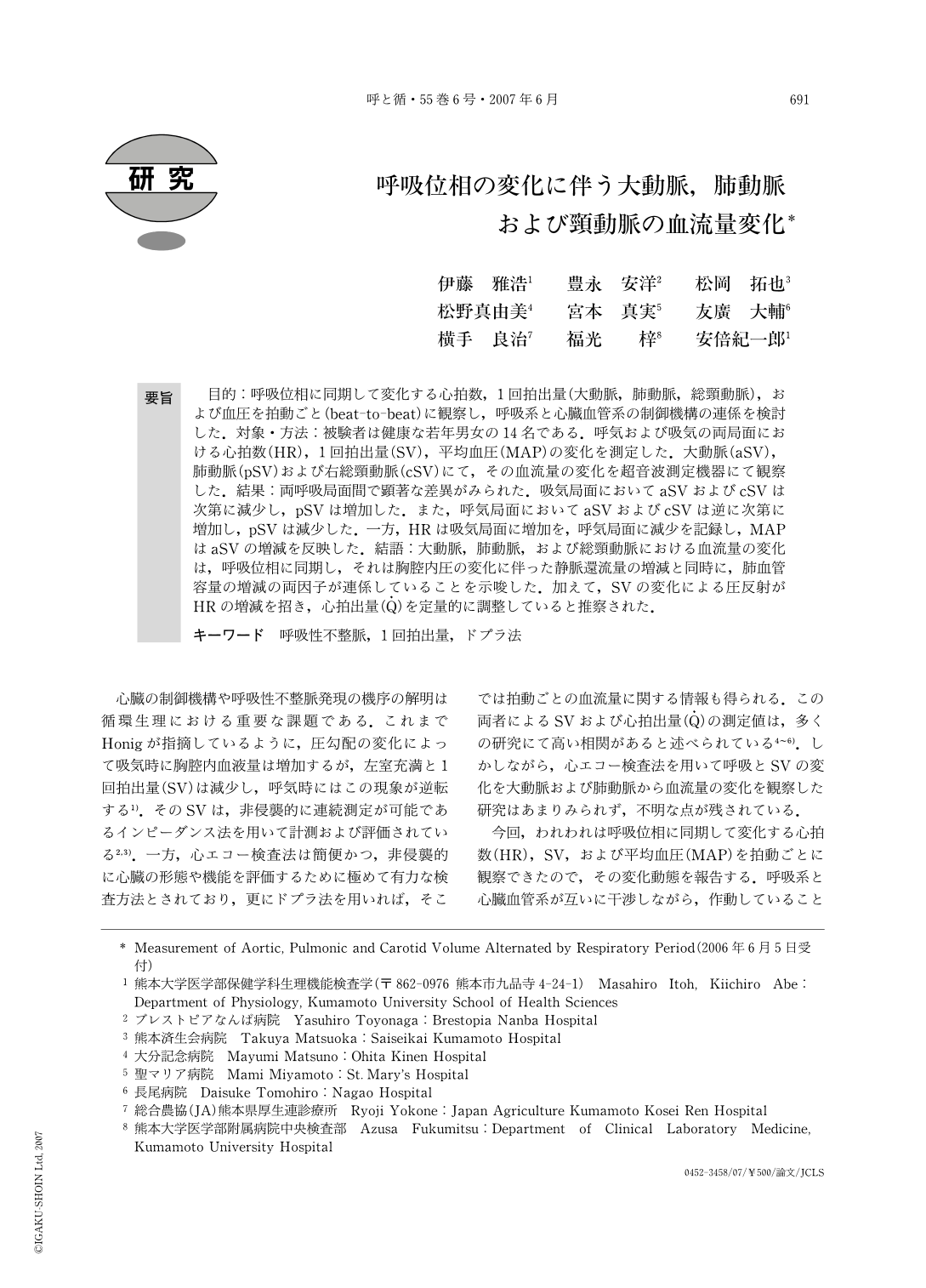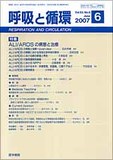Japanese
English
- 有料閲覧
- Abstract 文献概要
- 1ページ目 Look Inside
- 参考文献 Reference
要旨 目的:呼吸位相に同期して変化する心拍数,1回拍出量(大動脈,肺動脈,総頸動脈),および血圧を拍動ごと(beat-to-beat)に観察し,呼吸系と心臓血管系の制御機構の連係を検討した.対象・方法:被験者は健康な若年男女の14名である.呼気および吸気の両局面における心拍数(HR),1回拍出量(SV),平均血圧(MAP)の変化を測定した.大動脈(aSV),肺動脈(pSV)および右総頸動脈(cSV)にて,その血流量の変化を超音波測定機器にて観察した.結果:両呼吸局面間で顕著な差異がみられた.吸気局面においてaSVおよびcSVは次第に減少し,pSVは増加した.また,呼気局面においてaSVおよびcSVは逆に次第に増加し,pSVは減少した.一方,HRは吸気局面に増加を,呼気局面に減少を記録し,MAPはaSVの増減を反映した.結語:大動脈,肺動脈,および総頸動脈における血流量の変化は,呼吸位相に同期し,それは胸腔内圧の変化に伴った静脈還流量の増減と同時に,肺血管容量の増減の両因子が連係していることを示唆した.加えて,SVの変化による圧反射がHRの増減を招き,心拍出量(Q)を定量的に調整していると推察された.
Respiratory arrhythmia is one of most well-known interactions in which the respiratory system interacts significantly with the cardiovascular system. In order to investigate the interaction, blood volume of aortic(aSV), pulmonic(pSV) and carotid(cSV) per cardiac stroke on each inspiration and expiration phase is measured by using Doppler echocardiography. 14 subjects were measured for cSV in the sitting position and both aSV and pSV in the supine position. During inspiration tachycardia was noted and recorded aSV(29.4±9.7ml), cSV(6.6±1.7ml) and pSV(63.5±15.2ml), respectively. During expiration bradycardia was found to occur, accompanised significantly by increases in both aSV(46.8±17.2ml) and cSV(9.5±2.6ml) and a decrease in pSV(44.6±11.3ml) compared with the inspiration phase(p<0.01). Mean arterial pressure(MAP) increased in the expiratory phase(88±10 mmHg) and decreased in the inspiratory phase(80±11mmHg). These results suggest that the volume of pulmonary vasculature has been changed in response to the volume of venous return on every respiratory period and, consequently, cardiac output volume has been regulated and kept at a steady state along with HR change. The present cases indicate that both the cardiac and pulmonary vascular systems have been synchronized through baroreceptors to control swiftly and adequately blood volume supplying the whole body.

Copyright © 2007, Igaku-Shoin Ltd. All rights reserved.


